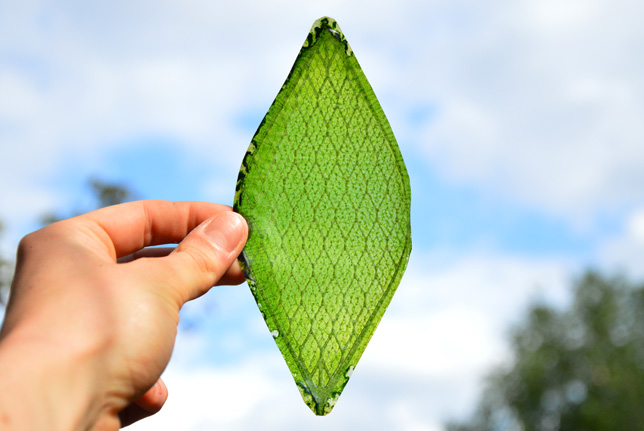I’m by no means a chemist or a biologist (I like to blame my education for that), but I can’t not feel skeptical about the synthetic leaf that set the internet on fire a few days back.
I’ve been reading up on topics like this recently, because there’s a sci-fi story in the making in my head, and I was a bit let down by how so many proposals have disappointing limitations even in theory. That’s why I don’t get it how the internet isn’t full of criticism of the silk leaf yet, and why are “respectable” sources quoting Dezeen like it was some scientific journal and not a design mag.
I don’t know enough about plants and photosynthesis to make comments, so I rather ask questions. Where does the leaf get the water for the photosynthesis from? Where does the created sugar go? How efficient is this whole artificial photosynthesis at all? Does it really work with ordinary indoor lighting? Why does Melchiorri say that plants don’t grow in space when they do? He also says the leaf is “low energy consuming” – what does that mean? The leaf requires extra energy besides light to operate? He calls the chloroplasts molecules, but I thought that they were organelles in plant cells – can they just be ripped out and yet stay functional? What exactly is the role of the silk fibers and how do they work? Is there any proper publication of these (supposed) results available for peer review?

